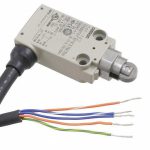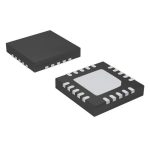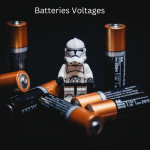
From our homes to our offices
Light-emitting diode (LED) is increasingly becoming the popular choice of lighting in both homes and commercial premises. This rapidly growing popularity is no surprise as LEDs have proven to be more efficient and long-lasting than conventional lighting technology. Companies that have already embraced the LED technology have reported that they consume approximately 48% lesser energy than before. Considering that the lighting forms 25.5% and 20%of the total energy costs incurred by commercial buildings in the US and UK respectively, such a margin of savings is a huge relief for owners of commercial buildings.
HOW LEDs work
Ordinary incandescent bulbs emit light when current passes through the metal filament contained in Tehran. LEDs, on the other hand, pass electrons through a semiconductor to produce light. LEDs have p-n junctions that emit light when suitable current is applied to these leads. The current will enable the electrons to recombine with electron holes and consequently releasing energy as photons in a process called electroluminescence. This translates to lower heat emission hence less wear and tear. LED produce light in numerous colours and can do so without much glare.
Why LED is good for commercial applications
-
Durability
CFLs offer an approximate lifetime of 10,000 hours while LEDs that can last 60,000 hours. That is literally 6 times longer. This reduces the hustles of replacing bulbs often and in the long run, reduces the running costs of the commercial buildings.
-
Efficiency
In 2014 the efficiency of LED stood at 100 Lumens per watt and it is expected to hit 150 Lumens per watt by 2020. Traditional incandescent bulbs have 13-18 Lumens per watt. Going by these figures, you are assured of saving a lot by choosing LEDs over incandescent bulbs.
Return on Investment
LED bulbs might be more expensive than their traditional counterparts, but they significantly cut on energy costs and are very durable eventually leading to a quick return on investment. Moreover, changing to LEDs is not that demanding since LED bulbs are designed to work with existing fittings.
Commercial LED lighting solution for businesses
LED products
-
High Bay Fixtures
They are ideal for warehouses that have a ceiling that is approximately 25 feet and higher. They can be used for either horizontal or vertical working planes. They can be used alongside a variety of reflectors. Traditionally, high bay lighting fixtures have been using fluorescent or metal halide bulbs but LED is certain to outlive them.
-
Low Bay fixtures
They can also be used in warehouses and many other commercial facilities with lower heights. Like their counterparts, low bay fixtures typically use metal halide and fluorescent bulbs but these two are rapidly losing ground to LED lighting fixtures.
-
Linear Strip lights
They are ideal for department and grocery stores since they have a smaller footprint and a clean look.
-
Recessed Troffer
They come in three standard sizes and can be surface mounted, pendant mounted or chain hung. They can be made up of few LED fixtures or LED linear Tube retrofits depending on the operating conditions.
Commercial lighting systems
-
Manual Intelligent Control
Manual Intelligent Control (MIC) systems embody a range of high specification sensor technology that offers tangible energy and carbon reduction. By using sensors, luminaires are able to detect the surrounding and adjust their brightness accordingly. This goes a long way in making savings and reducing carbon print.
-
Remote Intelligent Control
Remote Intelligent Control (RIC) also incorporates a lot of sensors too. However, its sensors are more comprehensive than those embodied in the MIC system and offer additional functionality and hence efficiency. They enable the RIC system to provide a lot of control over lighting schemes leading to maximum savings on energy while delivering optimum carbon reduction.





















